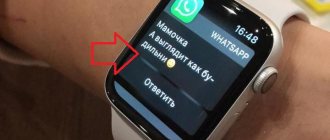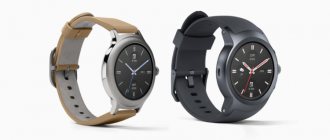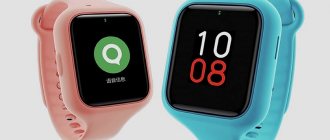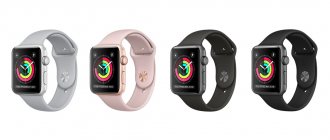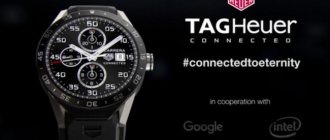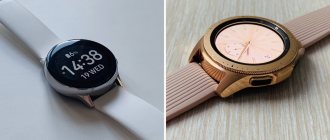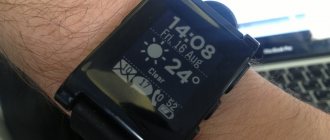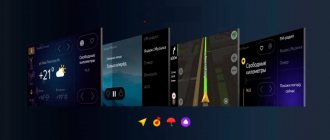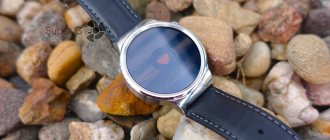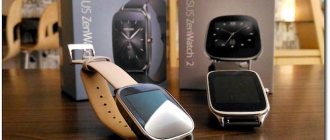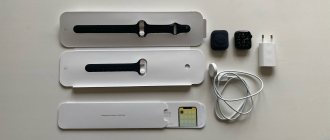HomeReviews
Natalie Vesna 08/01/2020
Average rating+1
Save to bookmarksSavedDeleted 1
- 0
- 0
- 0
- 0
- 0
- 0share
We bring you a detailed review of the Asus VivoWatch BP to tell you about the appearance, features and specifications of this device.
Asus is far from a leader in the smartwatch market, but it has its loyal followers thanks to the additional functionality in its devices. This primarily concerns medical functions. Thus, the Asus VivoWatch BP HC-A04 smart watch is capable of not only counting steps and tracking pulse, but also measuring blood pressure.
This is not the only advantage of the new Asus watches. They also have excellent autonomy: you need to charge the watch once a month or even less often. The transflective screen can work continuously, and due to the reflective layer in the sun, its brightness increases. Finally, athletes will appreciate the built-in GPS, which allows the watch to record tracks and determine coordinates without a smartphone.
Functions
VivoWatch BP is not only a device for monitoring health, but also a fitness tracker, with the help of which the user is given a number of useful functions during activity. Let's list all the features provided by the watch:
- Time and date display
- Pulse and pressure measurement
- GPS tracking
- Sleep monitoring
- Aerobic heart rate monitor with high or low heart rate alerts
- Pedometer
- Calorie counter
- Activity data with important metrics
- Relaxation level
- Notifications for incoming calls and messages
- Email Alerts
Characteristics
Formally, the characteristics look like this:
| Dimensions | 48x48x12 mm |
| Weight | 45 g (with fixed strap) |
| Display | diagonal – 1.26 inches. Matrix type and resolution not specified |
| Protection | IP67 (allows short-term immersion in water) |
| Compatibility | Android 4.4+/iOS 11.0+ |
| Wireless connection | Bluetooth 4.2 |
| Sensors | accelerometer, PPG, ECG |
| Navigation | GPS |
| Indication | backlight, vibration |
There is no camera, microphone or speaker in the watch, as well as the ability to work with the Internet (although you can update the firmware through an application on your smartphone). The manufacturer is well aware that potential watch buyers are unlikely to care about the name of the processor, the amount of RAM and built-in memory: by the way, there is no built-in user memory in the watch at all. The battery capacity is also not reported: the main thing is how many days the watch works on one charge (up to 28 days). And this is a completely reasonable approach: a geek won’t be impressed by such characteristics, but something completely different is important to the average user.
Equipment
Asus cannot be accused of excessively throwing dust in the eyes: unlike other manufacturers whose packaging looks more expensive than the gadget itself, the company prefers reliability and information content. The box is made of simple cardboard, and you can read key information about the watch on it.
The scope of delivery includes:
- Smart watch Asus VivoWatch BP
- Charging station (looks reliable and impressive)
- Micro USB cable
- An 84-page user manual is in English only, as well as a warranty card.
In general, everything is standard. There is, of course, no power adapter - naturally, since it is assumed that the user has a smartphone.
How it works
Vivo, of course, does not measure pressure directly, but determines it by indirect signs. Almost half of the front panel is occupied by sensors: a photoplethysmographic sensor and two electrocardiographic sensors.
When a user presses a finger against a photoplethysmography sensor, the latter (quote from the official website) “records changes in the pulse volume of peripheral blood flow in the finger pressed against the sensor.” Electrocardiographic sensors, in turn, measure the electrical fields that are generated when the heart operates. Based on the data received, the watch calculates pulse and blood pressure. And here there is one big “but” hidden.
“Before you start using your VivoWatch to its fullest, you need to calibrate it. We measure the pressure several times with a regular tonometer and enter the data into the application. Nothing complicated, but without such calibration my watch showed something very far from the truth - such indicators cannot be used in any form. But after the adjustment, the indicators of Vivo and the tonometer leveled out: now the deviation does not exceed five percent.”
For daily use, such accuracy is more than enough. No one will carry a blood pressure monitor with them everywhere, and the watch will always be on their hand - while walking, at work, and at lunch. If you suddenly feel unwell, you can quickly measure your blood pressure and take action. Sounds wonderful. At the same time, despite the fact that the sensors are medical grade, you cannot blindly rely on them. They can help you adjust your lifestyle or suggest that it’s time to see a doctor, but the watch still doesn’t turn into a diagnostic device and doesn’t make a diagnosis. Be sure to keep this in mind and do not trust your life to consumer electronics. Even as cool as Asus VivoWatch BP.
Design
Let's face it, the watch is far from the standard appearance of both classic watches and standard smart watches. It doesn’t matter which smart watch we consider the reference – Apple Watch or Galaxy Watch: Asus VivoWatch BP is still different from them. First of all, it has a large body that resembles a rectangle with rounded corners. Looks like a small phone, yes.
The body color is noble black, and this does not immediately make it clear that the screen is much smaller than it seems. In the end, however, this cannot be hidden. And no need: Asus is not eager to make this particular model an example of frameless design. After all, one way or another, on the surface it is necessary to place an electrode for taking an ECG - a metal protrusion - and photoplethysmographic sensors - four points below it. They cannot be hidden, since they work in tandem with similar elements adjacent to the wrist on the back side.
The use case itself doesn't leave much choice. To take an ECG, the user must put the watch on one hand and firmly press the sensors on the surface with the index finger of the other. Working in pairs, the rear and front sensors will ensure the transmission of impulses through the entire body.
It is logical that the watch is made of plastic: given its size, this is the only way to make it light and eliminate unnecessary contact with electrically conductive skin. The screen, however, is protected by glass, from which only the aforementioned sensors protrude. There is only one button on the case, on the right side - for unlocking: the main control element is the touch screen. On the left side there are contacts for charging the watch.
Unfortunately, the watch strap is not removable - a design feature. However, there are enough holes on it for both a child’s hand and a hero’s paw. What’s even more offensive is that the watch does not have full protection against water. Formally, the IP67 standard allows for short-term immersion in water, but here the manufacturer directly warns to avoid swimming and other situations where the watch can get wet. It is better to take them off even before going to the shower. Most likely the cause was the sensors.
The overall impression of the device is functionality above all else. However, this is typical for medical technology in general. And Asus is clearly positioning this model as a medical device, and not, say, an image or geek device. From this point of view, everything is practical and successful.
Appearance and design
“VivoWatch looks unusual and even strange. This is still not a fashionable toy, but almost a medical device, which its appearance really screams about. The small LCD display takes up barely half the area of the watch, and it is also shifted to the right - the left side is occupied by sensors. Well, at least the screen is color. It is made using trans-reflective technology and is protected by tempered glass: everything is visible in the sun, and even a careless owner like me does not leave any scratches.”
The delivery set is very modest: in addition to the watch itself, the box contains only a charging station, a USB cable and instructions. Just like Sparta. Although it’s hard to think of anything else that could be added here, so let’s not consider this a drawback.
“The strap is made of medical silicone. Not God knows what luxury, but it doesn’t irritate the skin, and that’s okay. I wear the watch without taking it off: for several months there have been no allergies or other problems. VivoWatch is comfortable to wear all the time - it weighs only 45 grams, the soft strap does not rub your wrist, so you soon stop noticing the watch. This is also good because the bracelet is not removable - you will have to get used to it in any case,” says our doctor.
The case is protected from dust and water splashes according to the IP67 standard. I didn’t risk diving with them, but I washed my hands calmly and didn’t take them off in the rain - the VivoWatch survived all the abuse with honor.
In general, the watch is assembled conscientiously and leaves the impression of a solid device. Although, of course, the strange appearance and rather large size with a small screen immediately make it clear that the design here has been sacrificed for practicality and functionality.
Application
Like all similar devices, the watch needs a special application to communicate with a smartphone - in this case it is called Asus HealthConnect. This is a special application for VivoWatch BP, it is not compatible with other Asus watches or trackers.
The application is available for iOS and Android. Through the application, data from the watch goes to the smartphone and, accordingly, to the proprietary cloud.
The home screen offers a number of pre-installed widgets to navigate to different modes. You can look at them:
- number of steps taken per day (including in comparison with the norm)
- sleep status report
- current heart rate (and measure it if desired)
The developers do not explain some things - for example, the “Stress Relief Level” (perhaps a lack of localization, or a derivative of the change in heart rate recently).
The watch (and the app) doesn't measure everything it can. The user obviously must enter some data himself - for example, calories consumed, blood sugar level, current weight, medications taken. Essentially, it's not just a companion for your watch, but also a hub for collecting health data, similar to Google Fit or Apple Health.
The disadvantage of the watch is the lack of a smart alarm clock that determines the ideal time to wake up based on your sleep phase. There is a regular alarm clock, and it supports vibration on the watch, but we are already spoiled by smart analogues. So that's a minus.
ASUS presents VivoWatch BP
MAIN
- Monitor blood pressure trends in real time: built-in ECG and PPG sensors take measurements in just 20 seconds
- ASUS HealthAI technology: an exclusive algorithm for creating personalized recommendations for maintaining normal blood pressure and a healthy lifestyle
- The built-in GPS sensor allows you to track physical activity and its parameters (speed, distance, duration) in the convenient ASUS HealthConnect mobile application
- 24/7 blood pressure monitoring: up to 28 days on a single charge
ASUS
announces the start of sales of VivoWatch BP in Russia.
VivoWatch BP is a new wearable technology that features exclusive HealthAI technology for 24/7 blood pressure trend tracking and health analysis. Compact and lightweight, they combine the functionality of a fitness tracker and a smart watch. One battery charge will last for 28 days of using VivoWatch BP in standard mode. At the same time, the device not only monitors important indicators of the body, but also offers personalized recommendations for maintaining normal blood pressure levels and maintaining a healthy lifestyle. Monitor Blood Pressure Trends
Using a unique system of dual medical-grade electrocardiography sensors and a photoplethysmography sensor, VivoWatch BP allows you to estimate your blood pressure levels in just 20 seconds. Thus, you can easily follow the trend of its changes throughout the day.
Unlike most heart rate monitors, you don't have to sit down and raise your arm to measure your blood pressure with the VivoWatch BP. Being extremely convenient to use, this compact device will be especially useful for people with hypertension.
Personal tips for controlling blood pressure
Exclusive ASUS HealthAI technology uses a special algorithm to automatically analyze the information received by the VivoWatch BP to create personalized recommendations for maintaining a healthy lifestyle, such as the number of steps you should take per day or the desired amount of sleep. The user's progress towards their goals is tracked, which means they can make small changes to their lifestyle that will gradually yield big results. HealthAI technology is implemented in the ASUS HealthConnect mobile application for iOS and Android operating systems and works perfectly in conjunction with the VivoWatch BP watch.
Fitness tracker features
The VivoWatch BP watch is your assistant in a healthy lifestyle. The built-in GPS sensor allows you to track physical activity parameters (speed, distance, duration) daily. The aerobic heart rate indicator, accompanied by vibration, will inform the user about how well he is performing aerobic exercise. The VivoWatch BP even calculates the number of calories your body burns during the day based on factors such as heart rate, activity level, gender, age and weight.
Up to 28 days of battery life
Compared to other wearable devices with similar functionality, the VivoWatch BP consumes less power, which means it can be used longer without recharging. With a battery life of 28 days under normal use, you can monitor your health with VivoWatch BP around the clock.
The ASUS VivoWatch BP is not a medical device and does not claim to be used as such. Any data obtained with their help has only informational value. DO NOT change your medication regimen based on data obtained using the ASUS VivoWatch BP. Take your medications as directed by your doctor. Only a doctor can diagnose and treat high blood pressure.
Price and Availability
ASUS VivoWatch BP can be purchased via the link, priced at RUB 12,990.
SPECIFICATIONS
| Display | Color LCD screen |
| Sensors | ECG and PPG sensors Built-in GPS sensor Accelerometer |
| Wireless interface | Bluetooth Low Energy (BLE) (for connecting to smartphones based on the Android or iOS operating system) |
| Water resistance | IP67 |
| Battery | 28 days of battery life (normal mode) |
| Color | Black |
| Weight | 35 g |
Specifications are subject to change without notice. Actual performance will vary based on software installed, usage scenario, and other factors. Full information is available at https://www.asus.com
About ASUS
Ranked by Fortune magazine as one of the world's most admired companies, ASUS offers a broad portfolio of products to enhance your digital life today and tomorrow, including Zenbo robots, ZenFone smartphones, ZenBook ultrabooks, high-quality computer components and peripherals, and innovative solutions for the Internet. things", virtual and augmented reality. In 2017, ASUS products won 4,511 awards and the company generated sales of US$13 billion with more than 16,000 employees and over 5,000 top developers worldwide.
Clock interface
Everything here is simple and modest. The developer provides the original five dials, which cannot be replaced - unless new ones appear in the updated firmware. However, you can’t really use your imagination with such a screen. All dials are static, all have a dark background. They differ in details: one shows the current activity, the other shows the battery charge, and so on. It’s awkward to compare them not only with Wear OS or Apple Watch, but even with Amazfit. Of course, Asus watches are not about design, and we understand that – but still.
The watch has four built-in programs in total. With the “Steps”, “Sleep” and “Pulse” modes, everything is clear: they show statistics based on data from sensors, and the pulse can be measured on the spot.
The Messages mode is made a little ridiculously: it shows the text of an incoming message, but does not show which application it came through. This approach would make sense if it were possible to answer it directly from the watch. But, alas, not in this life.
Since this is an Asus VivoWatch BP with a blood pressure monitor function, it needs to be calibrated first. To do this, you will need a regular tonometer, with which you will measure your blood pressure several times in normal conditions. Then enter this data into the application as basic data. Without this, you won't be able to use the watch to measure blood pressure.
This may seem counterintuitive: why use a watch to measure blood pressure if you already have a full-fledged blood pressure monitor? On the other hand, why do you need a watch to read messages if you already have a full-fledged smartphone? A watch should not be perceived as a replacement for a device, but as a companion device, a display that is always on your wrist.
It should be noted that the calibrated watch shows fairly accurate pressure measurement results. An error of about 5% is quite acceptable, given that they are needed primarily to track either sharp pressure surges or long-term trends. A portable device makes sense for exactly this. The picture is similar with heart rate measurement: with their help you can track a sharp jump or drop, in which an error of 3-5% does not matter much. For training, for example, you can set the boundaries of the desired zone in which the heart rate should be kept.
The disadvantage of the model is synchronization failures. Perhaps a firmware update will solve this problem. Asus, admittedly, releases updates regularly, so anything can happen. Moreover, the only point of updating the firmware is to fix bugs and maybe add one or two watch faces (although the latter is unlikely).
Functional
The first Asus VivoWatch entered the market back in 2020, but they were ordinary, in general, smartwatches without any special differences from their competitors. But the model with the BP index has actually turned into a medical device.
“To determine the pressure, you need to put your finger on the electrode on the front panel for 20 seconds. The results are much more accurate than those of competitors. True, it was not always possible to find the correct position of the finger on the contact pad the first time, but this is a matter of practice.”
In addition to measuring blood pressure, VivoWatch BP fully monitors the owner’s lifestyle: they count pulse, steps and calories burned, determine the quality of sleep, the level of stress and physical activity. For this purpose, the device has a built-in GPS sensor, an aerobic heart rate indicator, a counter of steps and calories burned. All this works, forgive the pun, like a clock: the device measures everything accurately and, for example, does not confuse a car ride with a jog .
At the same time, VivoWatch receives notifications about new messages and calls from the phone (I, however, almost immediately disabled this function).
Managing all this wealth is simple: using the multifunction button on the end and the touch display, even a pensioner can learn to measure blood pressure. A proprietary application for smartphones is necessary not so much for the normal functioning of the watch - they also cope well in offline mode - but rather for statistics. The device communicates with the phone via Bluetooth version 4.2.
“What I liked most is that one battery charge lasts for an honest month of continuous use. A real record among all classmates, who last for a maximum of a few days. You don’t have to carry a watch charger with you either on vacation or on a business trip - it’s very convenient.”
Autonomy
This is why we need to abandon open OS and custom applications. The proprietary firmware can be optimized so well that the watch can run for a month on a single charge. Well, if you actively use notifications, exercise often and keep your GPS turned on all the time, then two to three weeks. Look from one side: Apple or Samsung watches need to be charged every day. Look at it on the other hand: early fitness trackers with similar autonomy had a more meager set of sensors, no GPS, and not even a display! So applause to the Asus engineers!
General impressions
Asus has released a very interesting watch with a clearly defined target audience. A watch with a blood pressure monitor Asus VivoWatch BP will be useful for people who monitor their health and are ready to neglect other functionality of smart watches. These are either elderly people, or patients who are aware of their problems with the cardiovascular system, or active athletes for whom listening to their body is vital.
In terms of style and smart functionality, the watch is inferior to almost all competitors. On the other hand, it is still impossible to fully use the ECG function on the Apple Watch, although it was announced for the previous generation. And Asus VivoWatch BP - please, even right now. For the target audience of the watch, however, this is not so critical. Athletes would choose a silicone strap anyway, and older people can afford to neglect style. Even if they prefer timeless leather or metal.
Thus, Asus has released an interesting device focused on health. The model has its own childhood problems - problems with synchronization or unsuccessful display of messages. But we believe this can be fixed with updates.
